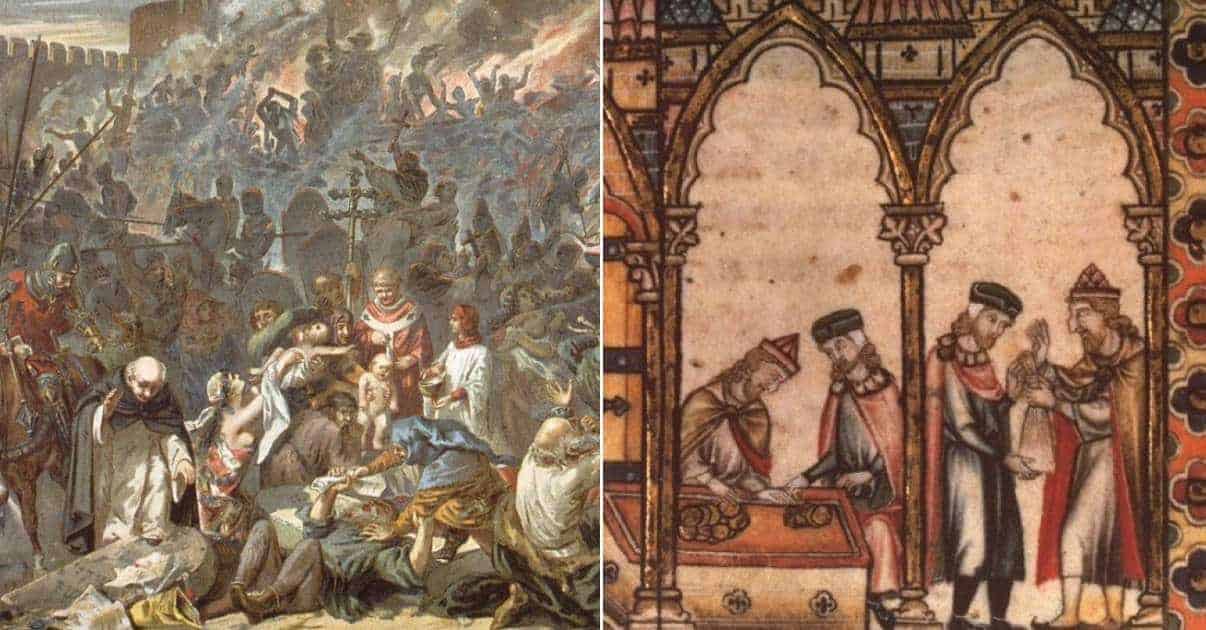In the 14th century, the Black Death swept over Europe. All across the continent, people died in enormous numbers. Prosperous villages and cities became ghost towns as plague burned through the population, killing peasant and king alike. Priests refused to perform the last rites for fear of contracting the illness, and the deeply religious people of medieval Europe died without even the comfort of ritual. As much as half of Europe’s population may have perished by the end of the century. And many watching their civilization crumble under the onslaught of faceless death were convinced that the end of the world was at hand.
As often happens, their fear turned into rage as they searched for someone to blame for the disease. They soon turned to a familiar target: the Jews. Scattered across Europe and largely isolated from the rest of their communities, the Jews were an obvious scapegoat for imagined crimes throughout European history. The Jewish community endured centuries of pogroms and violence motivated by religious hatred and the simple fact that they were different from everyone else. And with the Black Death coursing through Europe, the Jews were subjected once again to mass murder and persecution.

The deep-seated anti-semitism of medieval Europe rested on a number of different factors. First, there was the religious justification that the Jews had played a role in the death of Jesus. And medieval Christians often applied this imagined blood guilt to the entire Jewish people. In their mind, the Jews were responsible for the death of God, and thus there were very good reasons to despise them. But this justification probably had less to do with the history of animosity towards the Jewish people than other, more earthly considerations. In fact, much of the hatred boiled down to money.
In medieval Europe, Jews were often barred from taking the same sorts of jobs as Christians. Thus, one of the few ways of making a living available to medieval Jews was moneylending. The Catholic Church officially forbade the lending of money with interest. But this prohibition didn’t extend to Jewish communities. So in many cases, anyone who wanted to borrow money in medieval Europe had to do so through them. As a result, many nobles and merchants were in debt to Jews. This fact meant that they had a monetary incentive to encourage attacks on Jewish communities.

But it wasn’t just people who owed them money that had a reason to dislike the Jews. Medieval Europe was divided into a strict social hierarchy. To the poor peasants who rested at the bottom of the social pyramid, the Jews were one of the few people they could look down on. Deeply religious, these peasants often imagined that the Jews were hatching some scheme to destroy Christian society. This distrust of the Jewish community made it easy to imagine that they caused the Plague. And if an excuse was needed to blame the Jews, there was an obvious one: they seemed to die less often than everyone else.

